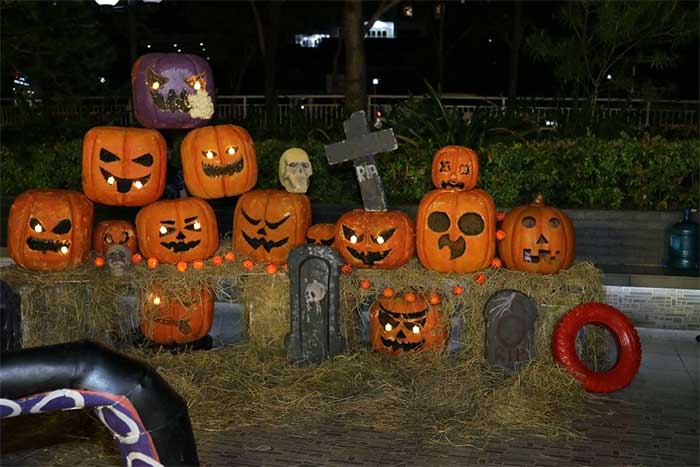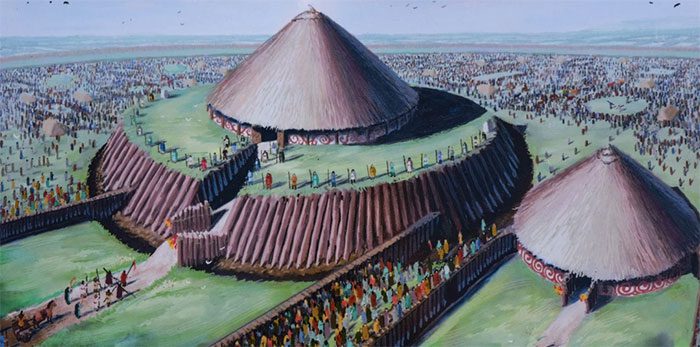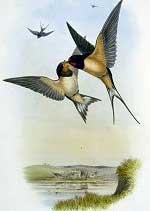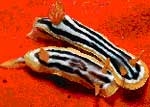Archaeologists have explored part of the Oweynagat cave, linked to a night of death and later becoming the famous Halloween festival.
In the fields of a little-known area in Ireland, there lies a large mound. Today, it serves as a grazing ground for wandering sheep, but in the past, it was associated with many mysterious events.
The entrance to Oweynagat cave in Ireland is believed to be the gateway to hell leading to the afterlife (Photo: Independent)
At that time, the sheep may have been hung high by the local people living near Oweynagat, sacrificed to the spirits of the dead.
This mound is located in Rathcroghan, the center of the ancient kingdom of Connacht, dating back to the Iron Age. Today, much of this area is buried beneath the agricultural lands of County Roscommon, Ireland.
In 2021, Ireland submitted an application for Rathcroghan to be recognized as a World Heritage Site. Although this site is associated with the Halloween festival tradition, it remains on UNESCO’s tentative list.
The Origin of the Legend
Rathcroghan spans several square kilometers of fertile farmland, encompassing 240 archaeological sites that date back 5,500 years, including burial mounds, ring forts (settlements), Iron Age ritual enclosures, and the Oweynagat cave, referred to as the gate to hell.
Irish archaeologist Daniel Curley states that over 2,000 years ago, when Irish communities worshipped nature and the land, the Samhain New Year festival was born at Rathcroghan.
A narrow path leading into the cave (Photo: Independent).
In the 1800s, the Samhain tradition migrated to the United States with Irish immigrants, quickly embraced by locals, who filled the streets, causing congestion everywhere. It later became known as Halloween.
Associate Professor Dorothy Ann Bray from McGill University (Ireland) explains that pre-Christian Irish divided the year into summer and winter.
Throughout that year, there were four festivals: Imbolc; Bealtaine, marking the end of winter and including customs such as washing faces in the dew, gathering the first blooming flowers, and dancing around a decorated tree.
Lughnasadh, a harvest festival dedicated to the god Lugh, presided over by Irish kings, and finally, Samhain (October 31), marking the end of one season of ministry and the beginning of another.
Rathcroghan is not a town; it is the royal settlement and an important site for the aforementioned festivals. Notably, during Samhain, Rathcroghan was a hub of activities centered around the temple on the hill, surrounded by the burial grounds of the Connachta elite.
The lower class Connachta communities lived in scattered farms and would come to this site to celebrate the festivals. During the event, they would trade, feast, exchange gifts, play games, arrange marriages, and declare war or peace.
Festival participants may have also performed rituals, possibly directed towards the souls in the otherworld of Ireland. They believed this was the home of the immortals, as well as numerous beasts, demons, and monsters. And during Samhain, some of these creatures escaped their world through Oweynagat cave.

Today, the Halloween festival also influences Vietnam (Photo: Ciputra Hanoi).
Researcher Mike McCarthy states: “Samhain occurs when the invisible wall between the world of the living and the otherworld disappears. A series of terrifying beasts from the otherworld emerge to ravage the surrounding landscape, preparing food for the winter.“
People protected themselves from these monsters by lighting fires, performing rituals on hilltops or fields. They disguised themselves as vampires to avoid being dragged into the otherworld by demons through the cave.
Ireland has so many historical sites that many remain completely unnoticed. Some lie underground, abandoned for centuries and subsequently eroded by nature. This includes Rathcroghan, which some experts believe could be the largest unexcavated royal complex in Europe.
Rathcroghan has never been excavated, but scientists believe it predates Ireland’s recorded history. They have uncovered the story of this site using modern technologies to scan and analyze artifacts found in the vicinity.

The ancient kingdom of Connacht as reimagined by archaeologists (Photo: National Geographic).
While the Irish have known this site as the home of Rathcroghan for centuries, it was not until the 1990s that a group of Irish researchers began using remote sensing technology to reveal the archaeological secrets beneath the ground.
Curley states: “Targeted excavations may soon be conducted, which will answer our research questions.“
A Site Still Overlooked
Despite its significance, Rathcroghan is one of the least visited attractions in Ireland, with only 22,000 visitors each year compared to over a million who visit the Cliffs of Moher, even though Rathcroghan is considered the birthplace of Halloween.
However, Rathcroghan’s reputation will likely rise if Ireland succeeds in its efforts to have it recognized as a UNESCO World Heritage Site. The government has included this area in the list of “Royal Sites of Ireland.”
According to experts, the potential for global tourism promotion of Rathcroghan through UNESCO could attract more visitors here. But it seems that this historical gem will not be packaged as a flashy Halloween tourist attraction.
Researcher Curley states: “If Rathcroghan is recognized by UNESCO, it will attract more tourists, which will help the country fund its preservation. However, we want this place to be a sustainable tourist site with enduring value rather than simply relying on the Halloween tourism craze.“





















































